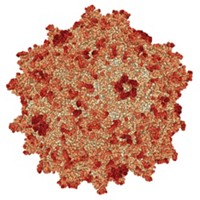Advertisement
Grab your lab coat. Let's get started
Welcome!
Welcome!
Create an account below to get 6 C&EN articles per month, receive newsletters and more - all free.
It seems this is your first time logging in online. Please enter the following information to continue.
As an ACS member you automatically get access to this site. All we need is few more details to create your reading experience.
Not you? Sign in with a different account.
Not you? Sign in with a different account.
ERROR 1
ERROR 1
ERROR 2
ERROR 2
ERROR 2
ERROR 2
ERROR 2
Password and Confirm password must match.
If you have an ACS member number, please enter it here so we can link this account to your membership. (optional)
ERROR 2
ACS values your privacy. By submitting your information, you are gaining access to C&EN and subscribing to our weekly newsletter. We use the information you provide to make your reading experience better, and we will never sell your data to third party members.
Business
FDA approves second gene therapy, Zolgensma, to treat spinal muscular atrophy in infants
At $2,125,000, it is the most expensive drug in the world
by Ryan Cross
May 30, 2019
| A version of this story appeared in
Volume 97, Issue 22

The US Food and Drug Administration has granted a long-awaited approval to a gene therapy designed as a onetime fix for a neurodegenerative disease in infants called spinal muscular atrophy (SMA). The therapy—marketed by Novartis and called Zolgensma—is only the second viral-based gene therapy approved in the US.
And at $2,125,000, it’s also the most expensive drug in the world—a title formerly held by the first FDA-approved gene therapy, Luxturna, which costs $850,000. Novartis will charge $2,125,000 for a onetime injection of Zolgensma under a 5-year payment plan at $425,000 a year.
But for some families, the therapy has already been a lifesaver. In the US, 450 to 500 infants are born each year with SMA, which is caused by a mutation in a gene called SMN1. Without treatment, infants begin losing muscle strength within 6 months of birth. They can’t sit or stand, they require ventilators to breathe, and most don’t survive past 2 years of age.
Zolgensma is designed to fix this. It supplies a fully functional copy of the SMN1 gene into the nervous systems of children by packaging the gene in a virus called adeno-associated virus 9 (AAV9). A pivotal clinical trial testing the therapy in children restored the gene’s function enough to help some children sit, stand, and even dance.
“This was the kind of transformational therapy that I dreamed of,” says James Wilson, whose lab at the University of Pennsylvania discovered AAV9 at the turn of the century. “I am confident that there will be many similar successes in the next few years.”
In 2009, Wilson licensed AAV9 and other viruses to a biotech company he cofounded called Regenxbio. That company has in turn licensed the viruses to several other gene-therapy firms, including AveXis, which used AAV9 to make the drug that became Zolgensma.
Novartis acquired AveXis for $8.7 billion last year.
Zolgensma will compete with an existing SMA drug called Spinraza, which offers a temporary fix to the genetic mutations in SMA and must be taken for life. Spinraza, which is sold by Biogen, costs $750,000 for the first year and $375,000 for every year thereafter. After 5 years Spinraza costs $2,175,000, at which point the Novartis drug is cheaper. Indeed, Novartis deems its $2,250,000 price tag “highly cost-effective” for the long run.
There are multiple kinds of SMA, and the FDA gave Zolgensma broad approval for use in any infant with SMA under the age of two.
“SMA is such a devastating disease, and the clinical data by and large has been very impressive,” says Mark Kay, a gene-therapy scientist at Stanford University. But it is important to note that Luxturna and Zolgensma are not knockout cures, Kay adds.
Luxturna, a treatment for inherited blindness, only partially restores vision. Similarly, some infants who received Zolgensma are still not able to sit or stand on their own. The drug carries a warning for severe liver injury, and people who have preexisting immunity to AAV9 are not eligible to receive the therapy. And although Zolgensma is designed to be a permanent fix, scientists still don’t know if the treatment will remain effective for life.
Investors and scientists are looking to long-running trials of gene therapies in rare blood diseases to see how long the treatments remain effective. BioMarin’s treatment for hemophilia and Bluebird Bio’s therapy for β-thalassemia are expected to be approved within a year. There are hundreds more gene therapies in the early stages of development.
“As more and more gene therapies are developed, you may start to see some cures,” Kay says. The FDA is gearing up to evaluate them, and it anticipates approving 10 to 20 cell and gene therapies per year, starting in 2025. “There is now a path forward to getting these gene therapies approved,” Kay says. “The trickle will likely increase in the next few years.”
UPDATE
This story was updated on May 30, 2019, with new information





Join the conversation
Contact the reporter
Submit a Letter to the Editor for publication
Engage with us on Twitter